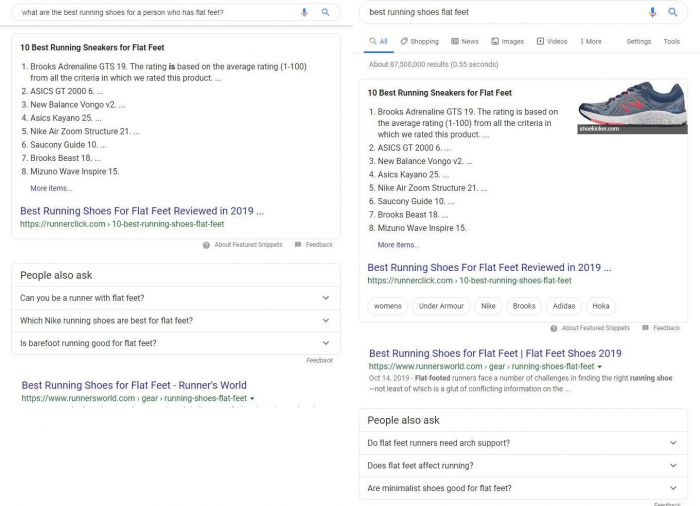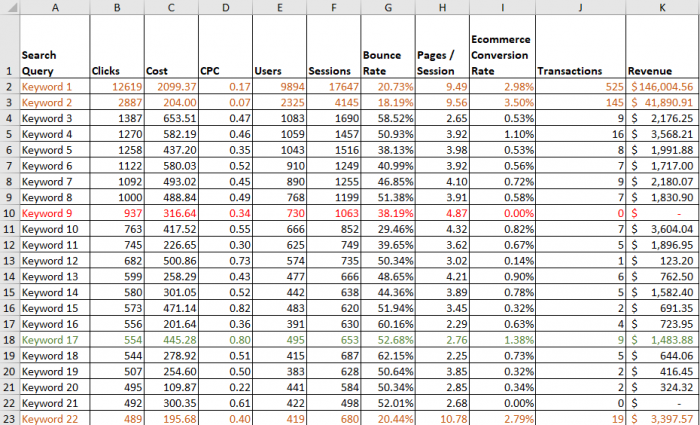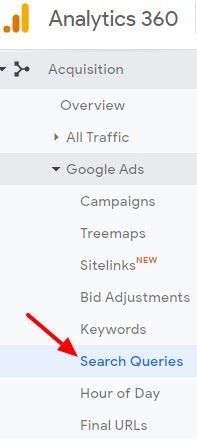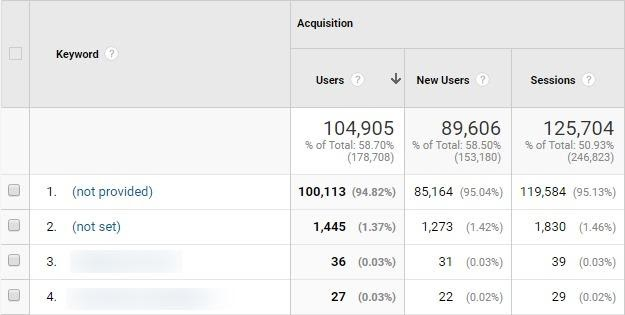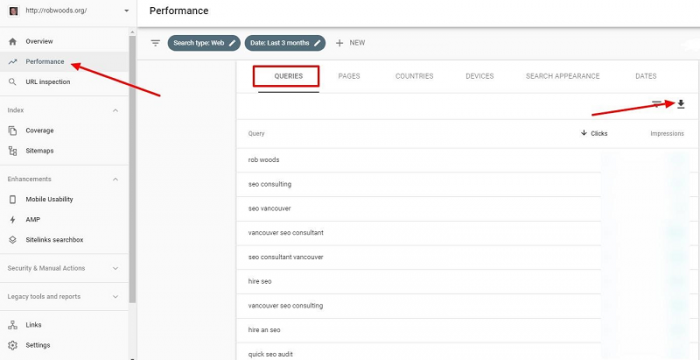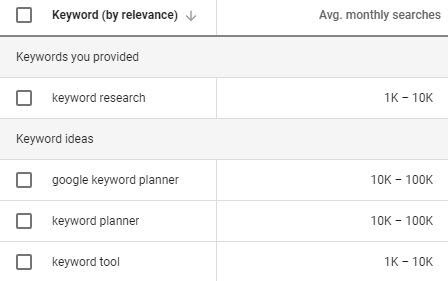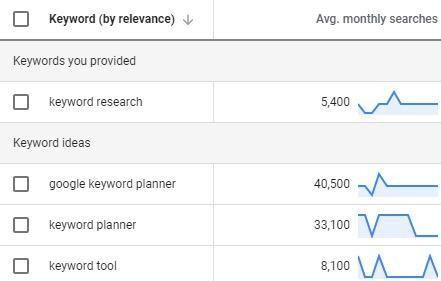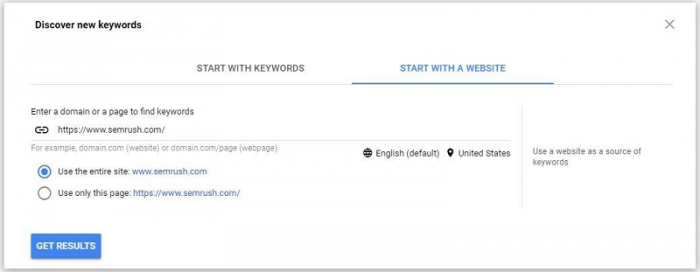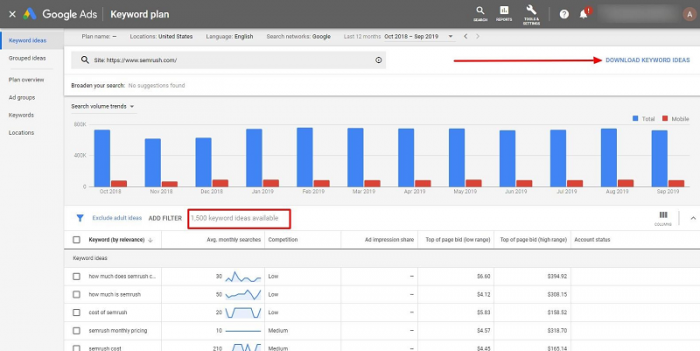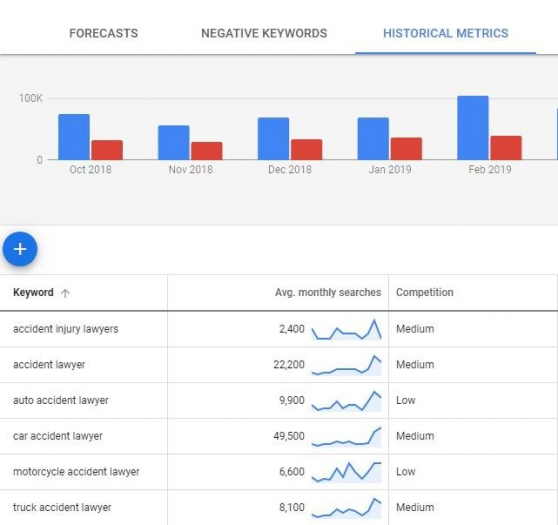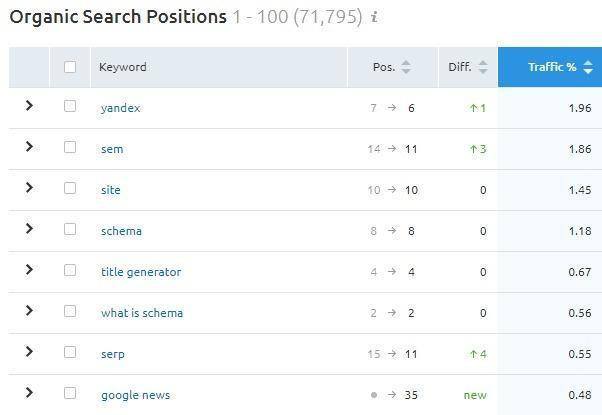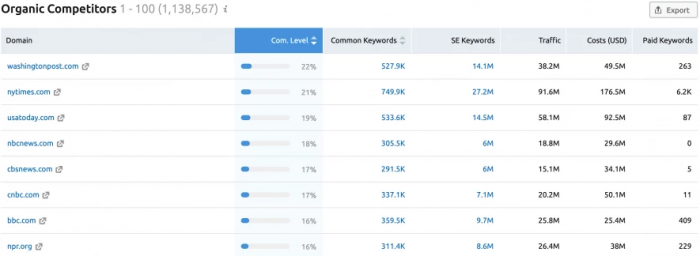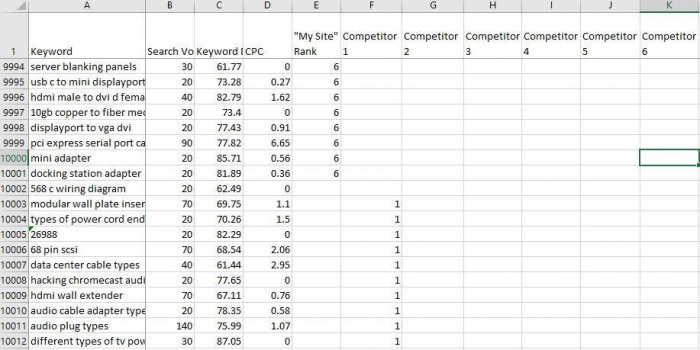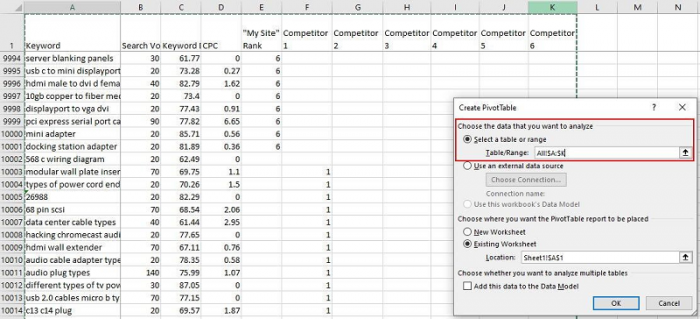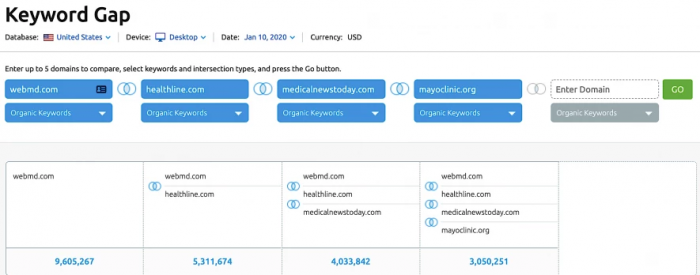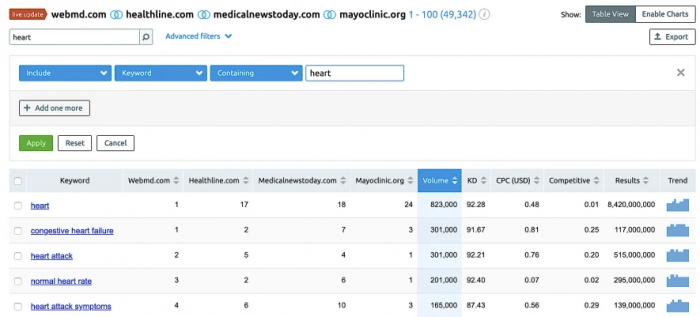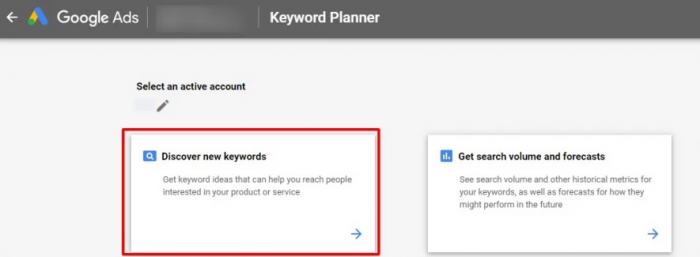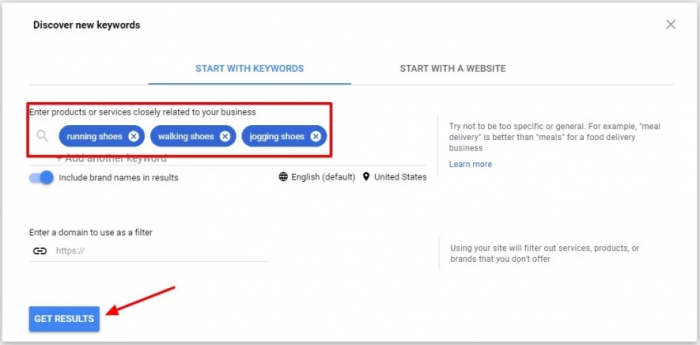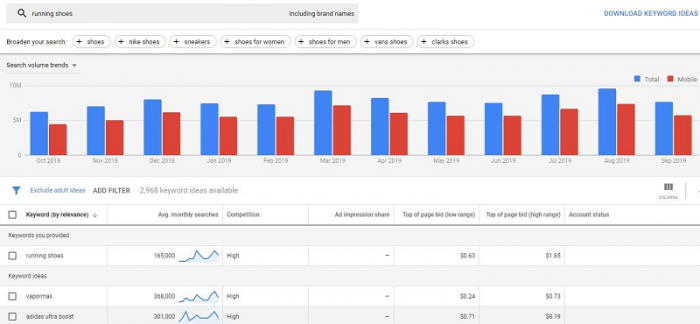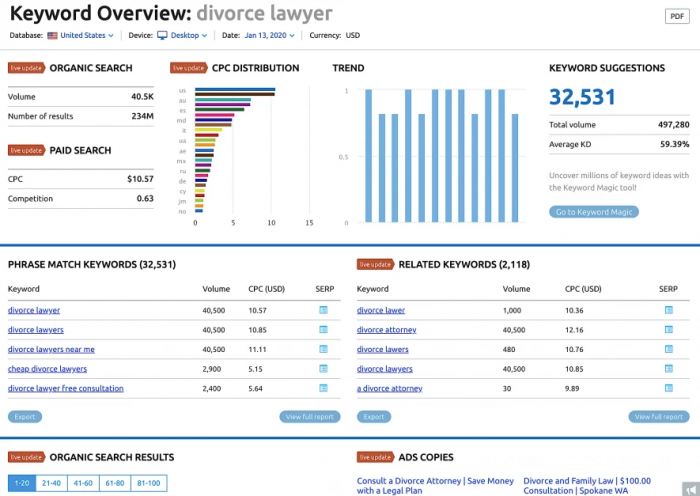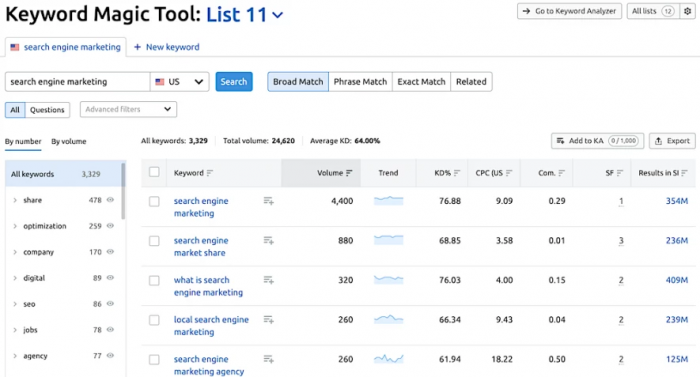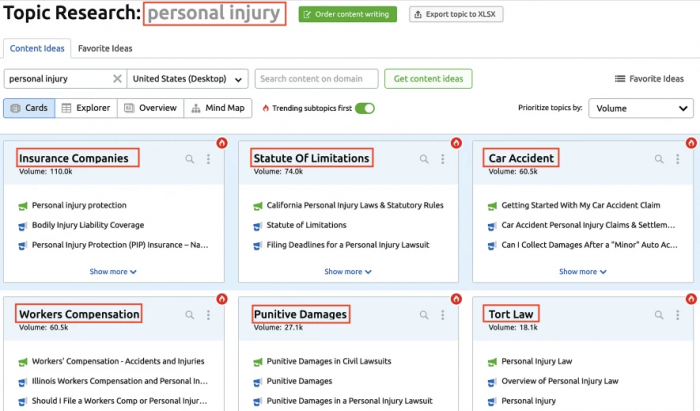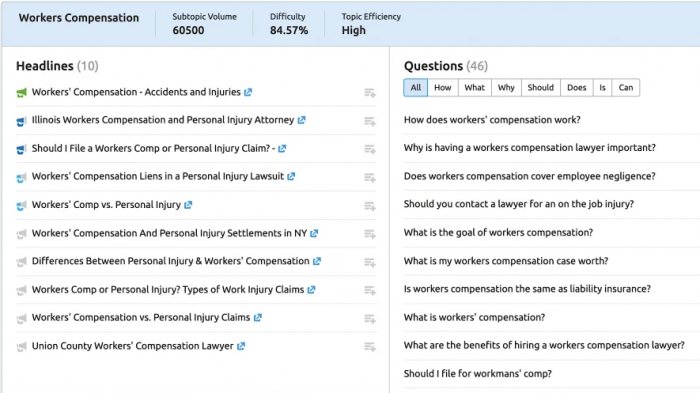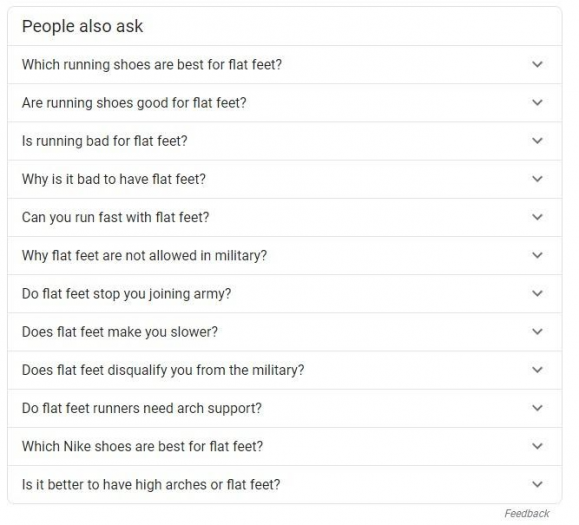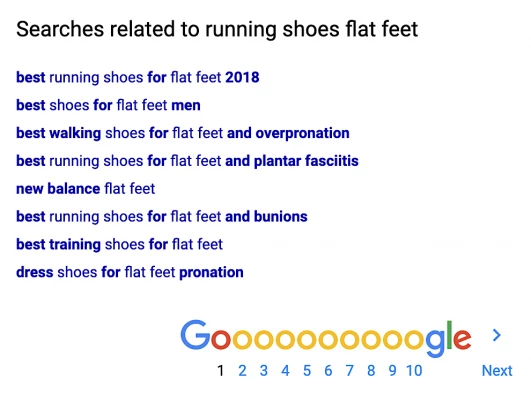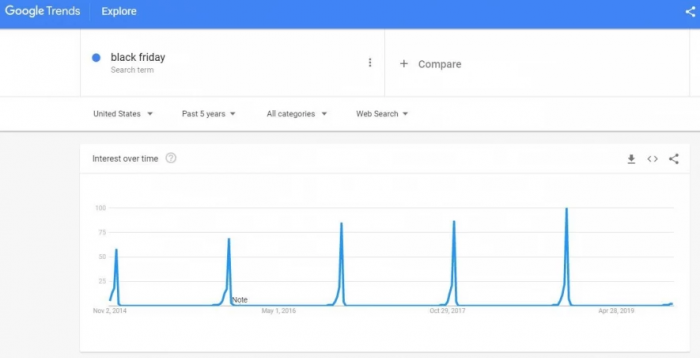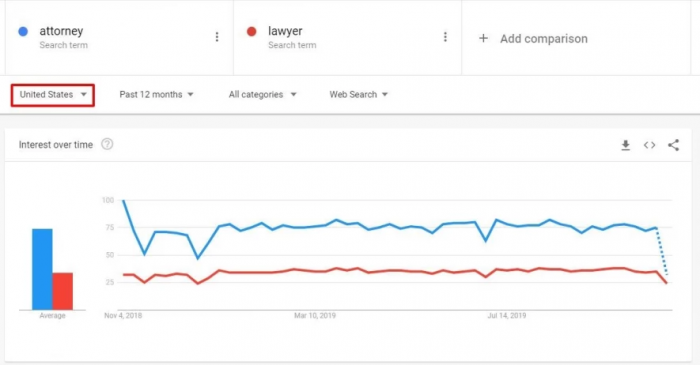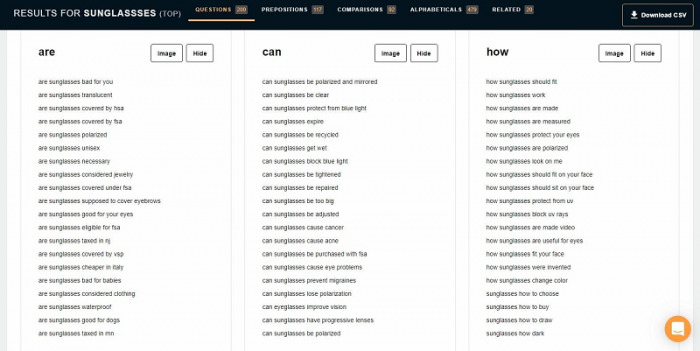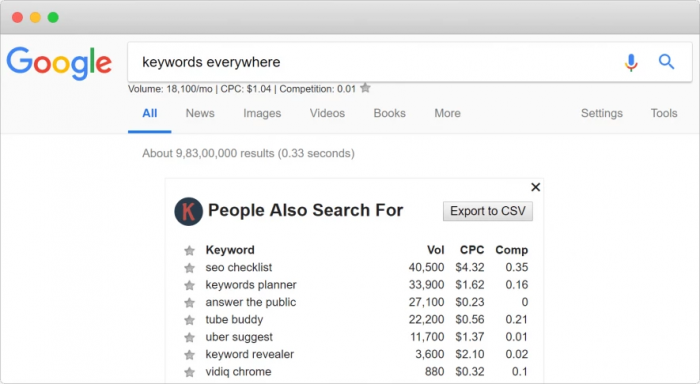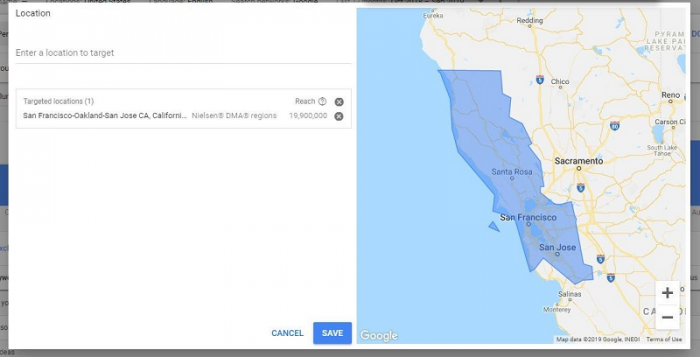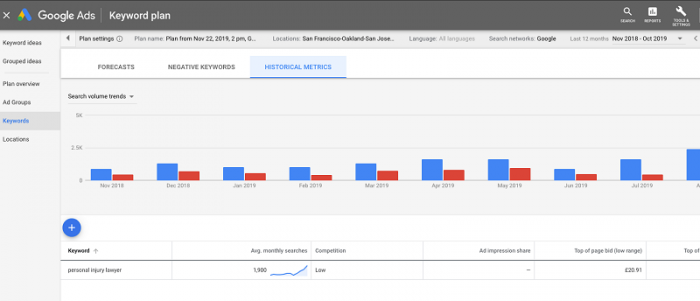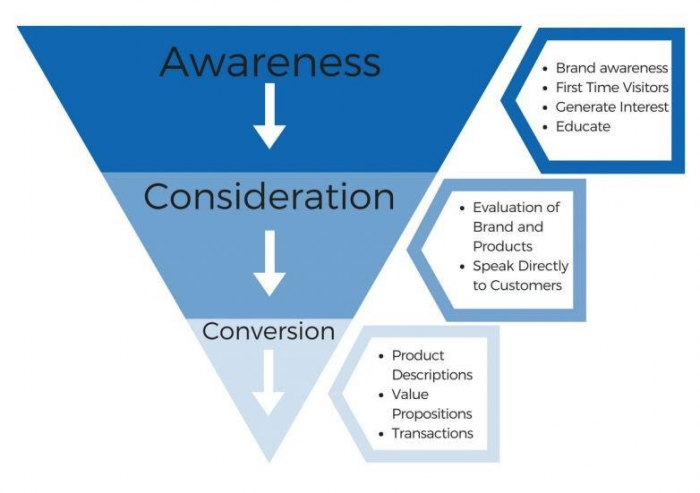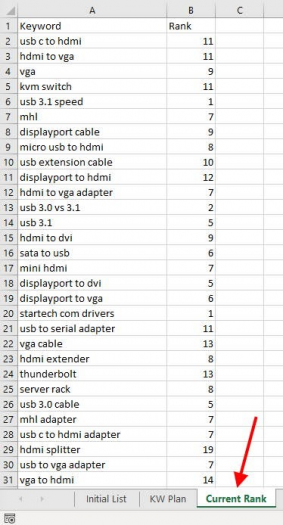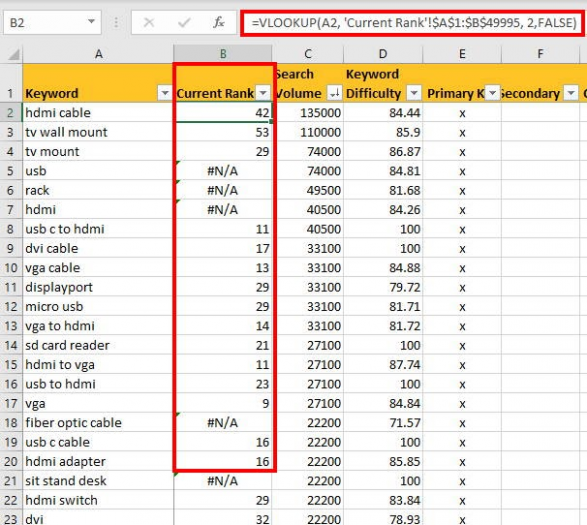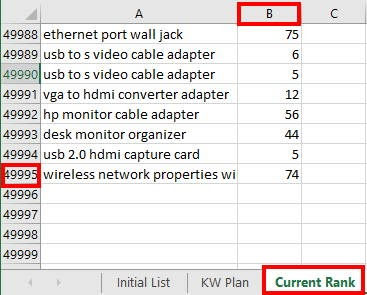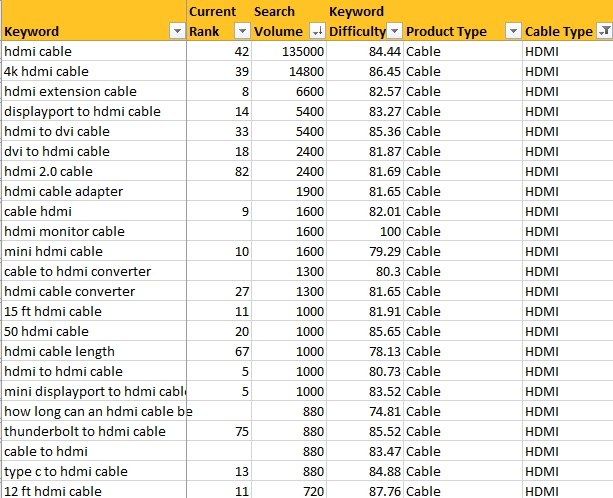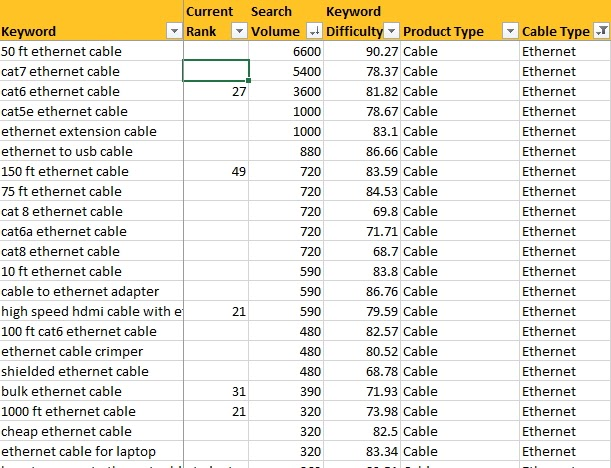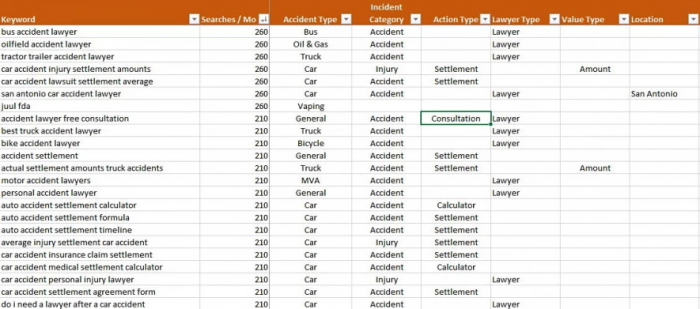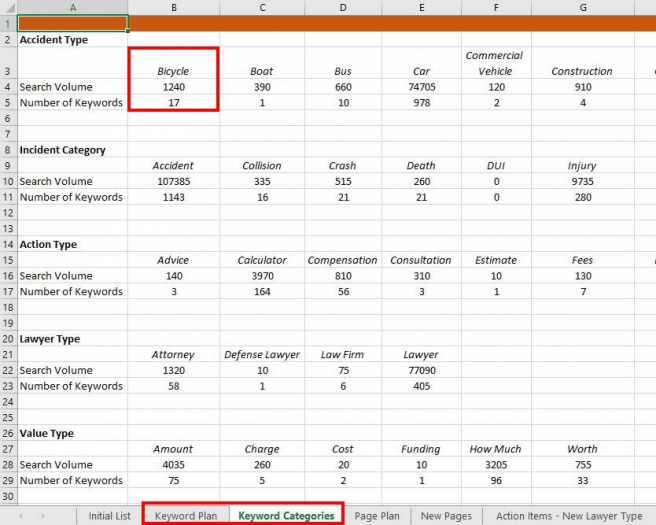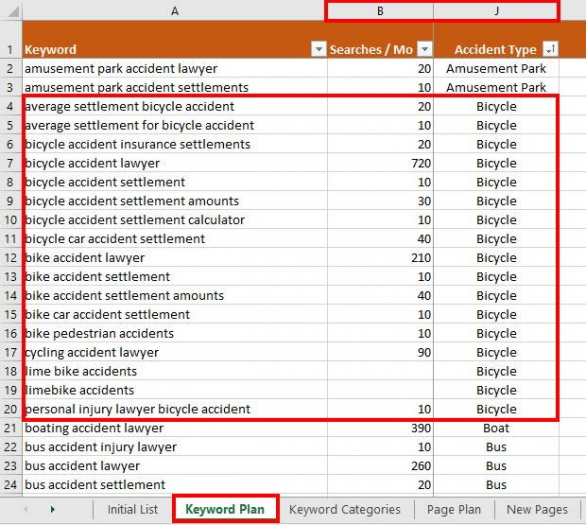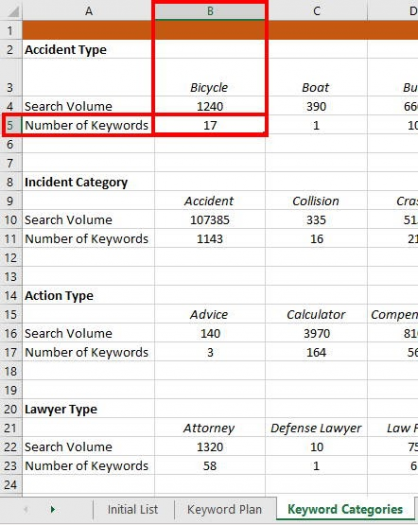This guide is intended to teach you how to do in-depth and meaningful keyword research. Good keyword research allows you to uncover the terms, phrases, questions, and answers that are important to your users or customers AND important to achieving your goals, whether they are getting more pageviews, capturing leads, or selling products and services. Keyword research sets you up for building effective strategies for improving or expanding your content to acquire higher rankings, and to rank on a wider variety of terms, to ultimately drive more relevant organic traffic to your site.
In this step-by-step guide we will cover:
1. What Is Keyword Research?
Keyword research is the process of finding all of the possible search engine queries which may be relevant to your business and your customers. Keyword research includes not only finding these keywords but also sorting and prioritizing them into logical, related groups, which can then inform how you might change existing pages on your site or create new content.
Why Keyword Research Is (Still) Important for SEO
While some SEOs may argue that keywords are no longer important or won’t be essential in the future, they are still crucial not only for search engine rankings but for understanding the search intent behind a given query. As long as people search using the search engines by typing a query into a search box or making a voice query on an “assistant”, it will be crucial to understand the following:
- What those queries are.
- How important they are to your business.
- How you might create the best content to answer the intent of the query.
Even as search trends change, if people are looking for an answer to “something”, keywords will continue to matter.
Old school “individual” keywords and optimizing a single page for a single keyword has certainly gone by the wayside. However, using groups of related keywords, and examining their relative popularity, can not only give you insights into opportunities to drive more organic traffic to your site but can also help you understand the overall intent of your potential users. This information can help you better satisfy those intents not only through optimizing your website but potentially optimizing your product selection, navigation, UI, etc.
Understanding Keyword Themes (Groups of Related Keywords)
Some may refer to groups of related keywords as topics or themes, but at heart, they are groups of individual keywords that signal a similar need or intent by a searcher. As such, keyword research should never be left as simply a list of keywords, but rather used to form various segments of interrelated keywords.
A single topic or theme might lend itself to a single piece of content that can answer all of the needs within that topic, and thus a single page is “optimized” for the entire group of keywords. Or, the topic may be broad enough to signal that you should have an entire section of your website with many pieces of content targeted at answering the user intents.
For example, if you were writing a post about “how to fry an egg”, one single article might satisfy the intent for all the keywords around that “theme”. Example:
- How to fry an egg
- How to cook a sunny side up egg
- How to cook an egg over medium
- How to fry an egg for a sandwich
- How to fry an egg in the microwave
- How to fry an egg over easy
- How to fry an egg over hard
- How to fry an egg over medium
- How to fry an egg sunny side up
- How to fry an egg with oil
- How to fry an egg without oil
If you had a group of keywords or a theme around “what caused the decline and fall of the Roman Empire,” all of the intents around that theme of keywords are unlikely to be satisfied by a single piece of content and would likely require a much larger body of content.
Keyword/Query Trends
Some SEOs argue that individual “head” keywords aren’t going to matter anymore because of voice search —which leads to long, natural language search queries. Search queries, in general, are becoming much longer, in part due to voice search.
But, that doesn’t mean that shorter “head” keywords can’t form the basis for starting your keyword research and helping to uncover many longer-tail keyword variants.
This is partly because, at least for now, there really is no separate voice search results or database.
Google, for instance, simply returns essentially the same results for a voice query as if you had typed that exact query into the search box on the Google web interface or search app. For many of these long longtail queries, Google is simply going to parse out the most important terms in the query and return the results for that.
For instance, someone may search for “Hey Google, what are the best running shoes for a person who has flat feet?”. Looking at Google search results, it is easy to see that Google returns the exact same result set for that query as it does for “best running shoes flat feet.”
So just because someone is making the longer more natural language query doesn’t mean that it isn’t important to know that people are making queries related to “best running shoes flat feet.”
Note: that doesn’t mean you are going to highly optimize a webpage for the exact phrase “best running shoes flat feet.” The fact that the phrase “best running shoes flat feet” gets significant search volume tells you that if you want to capture the search traffic for many variations of search terms where the searchers all have the same intent, you will want to create a fantastic resource that tells people what the best running shoes are for them if they happen to have flat feet.
2. How to Do Keyword Research
Keyword research for SEO consists of gathering all possible variants of keywords that might be relevant to your current site, content, products, services, etc. and/or relevant to your ideal customers or users but not directly related to your current offerings.
An example of keywords that are of interest to a site’s users but not directly related to the site’s products might be keywords related to marketing or hiring for small businesses when the site you are doing the research about sells accounting software for small businesses. In this case, small business marketing keywords might not seem relevant to the current site, but they are relevant for the same people the site is attempting to attract.
After an initial list of all possibly relevant keywords is built (most tools will generate large lists of keywords which may or may not be relevant for you) the list needs to be trimmed down to those terms that are truly relevant for the site you are doing the research for and its potential users. Then the terms need to be grouped, sorted, and prioritized.
Note that we are focusing here on organic keyword research as opposed to keyword research for PPC. While the two can be similar, there can be significant differences, particularly where it comes to competitiveness. If you are a very small, new site and your competition on a particular search term is sites like Wikipedia and Amazon, ranking on that term might be a much longer-term strategy, or a lower priority, in the short term for organic rankings and traffic. Whereas for PPC, the decision you have to make is simply whether you can afford to bid competitively on the term.
Building Your SEO Keyword List
Step one in your SEO keyword research is simply amassing your initial keyword list. There are numerous sources for possible lists of keywords. You need to decide which sources are right for you, but you should find that the ones below get you most of the way there.
When I am building my initial list, I attempt to capture, at minimum, for each keyword:
- The keyword
- Monthly search volume
- Keyword difficulty
- Competitiveness
- CPC
- Current rank
Example:
In some cases, you may have to “normalize” some of the data to be able to compare data from one source to another. For example, some sites rank competitiveness or keyword difficulty of the term on a scale from 0 to 1, whereas others use a scale from 0 to 100. When merging this data into a single spreadsheet, you may have to multiply or divide one or the other sets of data by 100 so that the scale is at least similar.
Client / Stakeholder Discovery
The first step in beginning any new keyword research project and building keyword lists should be in thoroughly understanding the business or site in question. This is particularly important if you are an outside consultant or agency because you will likely never understand the business or its customers nearly as well as those who deal with them day in and day out.
If you are an in-house SEO doing keyword research for a new business, or for a division that you haven’t dealt with before, it is absolutely crucial that you understand the products or services that are offered and, more importantly, the needs and pain points of current stakeholders, both users/customers and internal stakeholders. Without this understanding, particularly in complex or highly technical industries, you might not be able to generate a comprehensive list of keywords, nor evaluate whether those keywords are relevant and essential.
Ideas for initial keyword discovery:
– Spend at least a couple of hours exploring and using the website and make notes of keywords that may be important.
– Send an initial “SEO keyword discovery questionnaire” to the client or main stakeholder asking questions and for information, such as:
- Is there any seasonality to your business or traffic? Do offerings or content change seasonally?
- Are you launching or discontinuing new categories of products, services, or content in the near future?
- List what you believe are your most important keywords.
- List of business objectives.
- List your target audiences.
- List your main competitors.
- What geo-locations do you operate in?
– Consider interviewing marketing managers, salespeople, product specialists, or even current/potential site users or customers to fully understand the possible variations of how a product or service may be referred to and what problems they are trying to solve by visiting the site.
Brainstorming Keywords
Getting team members, clients, your content team, and others involved in the keyword brainstorming process can generate more keywords and more relevant keywords than you might be able to come up with on your own. It will also increase their buy-in on the relevance of the keywords and the value of the keyword research itself. Hold short brainstorming sessions with stakeholders to have them come up with what they think might be relevant terms based on their understanding of their website.
User/Searcher Personas
At this point, you may not have access to ready-built searcher personas, but many companies have already gone through a customer persona building process. Looking at these customer personas can only help you generate new ideas for keywords. You can also run the list of keywords you generate through the filter of the personas to see whether they are truly relevant to the terms that will drive traffic from the users the site is attempting to target.
Consider this example of an electronics company, which has built a persona/avatar for their ideal customer. While the site sells a huge range of computer and electronics components and cables, it is useful to know that their ideal customer is not the average B2C user looking for a cable for their Blu-ray player. Instead, they are a B2B IT professional looking after electronics for Fortune 500 size companies. Not only does this information allow me to filter out search queries that are clearly consumer-based or looking for single units, but it also allows for filtering informational queries as well. For this customer, the search query from my initial list, “which topology uses the least amount of cabling,” might be relevant but, “what cable do I need for ps4 controller” is not.
Current Keyword Lists
If you have a new project, and someone has compiled a list of keywords for the site previously, and the list is available, starting with that list as a basis for new keyword research should pretty much be a no-brainer unless the nature of the site has radically changed since the research was done.
PPC Keywords
If you already have keyword lists compiled for pay per click advertising like Google Ads, that is another great place to start. As previously mentioned, not all of these keywords may be ideal in terms of competitiveness for your organic keyword list. Some obvious terms to include, and ones which should be high priority in your list, are those that are currently generating conversions.
If you are paying to get traffic on those terms and the traffic converts, you really need to be trying to rank on those terms organically and get that traffic for “free”.
You can get Google Ads PPC data from your Google Analytics account, as long as your Google Analytics and Ads accounts are connected. Go to Google Analytics and navigate to “Acquisition > Google Ads > Search Queries” and export the data for the time period you wish to analyze.
The timeframe you want to analyze will vary based on the amount of traffic and conversions the site gets (usually, the higher the traffic, the shorter the time period you can use), on seasonality, the variety of keywords, etc.
Simply export the data to your spreadsheet medium of choice: Excel (XLSX), CSV, or Google Sheets.
You will want to exclude branded terms as you likely are already “optimizing for them.” You want to look for terms which show positive metrics like low bounce rate (they are relevant for users), and which have good conversion, transaction, and/or revenue numbers (they are essential for the success of the site). You may want to look at terms with poor conversion rates to see if they are actually relevant to the business. If they are, there may be other business or site usability reasons they are not converting; you should still include the terms in your list.
For example, in the graphic below, the branded terms are in orange (they obviously have good traffic, engagement, and conversion numbers). The term in red gets lots of traffic and averages more pages per session than other terms, but it is not converting. That is one that you want to look at more carefully to see if it is relevant. The term in green may be one to really look for more variations of, as it gets a higher conversion rate than most.
Some Google Ads and Analytics Tips
Once you have the list of keywords from your PPC data that are relevant for your SEO keyword plan, you will want to input those into one of the keyword tools like Google Ads or SEMrush to get the average monthly search volumes, keyword difficulties, and other metrics before including them in your main keyword list.
You want to make sure to run the “Search Queries” report in Google Analytics, which is the actual terms people searching on Google typed in before clicking on an ad, rather than the Keywords report, which is the terms the site is bidding on in Google Ads.
If you are wondering how to “get search volume and forecasts” in Google Ads, please know it is discussed in the Google Ads section below. Match types like “Phrase Match” and “Broad Match” in Google Ads make an ad show for many more terms than are actually being bid upon. Remember, you want the actual queries users are searching for.
Some of the terms that come out of your PPC keyword lists may be too competitive for you to rank on in the short term organically. It may be that you can bid on them for only a small geographic region where it doesn’t make sense to try and rank on them nationally. For example, it may make sense to bid on “lawyer” in your local town or city, but when you look at the search engine results, you find that the top 5 sites are huge national or international informational sites. So, a term that broad may not make sense to be a high priority in your organic keyword list as compared to something much more specific like “uber accident lawyer NYC”.
Google Analytics Keywords
You may not think that Google Analytics can give you meaningful data in the way of keywords, particularly organic keywords, due to the fact that the vast majority of your keywords going to be reported as “not provided”.
However, there are some tools such as Keyword Hero, which can turn your “not provided” back into meaningful data. You may also think that keywords that already drive traffic aren’t important to put into a keyword list, but if they are clearly relevant to your site, they can certainly be used as root keywords to be used as input into other tools to generate more related keywords.
Google Search Console Keywords
Another source for getting the keywords that are currently driving traffic to your site, if you don’t have access to backward engineer not provided keywords, is Google Search Console. GSC is only going to give you the top 1,000 keywords, but that is certainly a good place to start to find keyword ideas. Particularly if you are not familiar with the site when you are just getting started on the keyword research. Again, this isn’t your ultimate final list of keywords, but they certainly should spawn ideas for looking for related keywords.
If you are unfamiliar with Google Search Console, you can find this data by going to the Performance reports, selecting Queries, and then you can easily download all of the data as a spreadsheet.
Generating Organic Keyword Ideas from Your Website(s)
In addition to the sources above, which can tell you the keywords that are already driving organic traffic to your site, there are additional tools that can recommend new keywords based on a website and content analysis. And others can show you the entire universe of keywords your site is currently ranking for, and whether or not they are driving traffic. Let’s look at a few.
Google Ads
Google Ads (the service formally known as AdWords), though somewhat biased toward pay per click, is still a great source of keyword ideas. To use it to gather keyword ideas for a website, you are probably going to need access to an account that actually spends money on Google Ads. If you don’t have access to such an account, Google tends to give broad ranges of keyword traffic rather than more accurate data.
As you will see from the example below, Google doesn’t always give you great data if you are doing keyword research from an account that doesn’t actively spend money on Google Ads.
In the first example (an account that does not spend money on Google ads) for the keyword “keyword research,” Google simply gives you a range of traffic between 1000 and 10,000 queries per month. That is a pretty broad range and doesn’t really give you a very accurate picture of what the traffic potential is for this term.
Contrast the above with the example below, taken from an account that does spend money on Google Ads, and Google will actually give you a much more accurate estimate of the number of queries per month at 5400.
To get all the recommendations for keywords related to your site simply select “Discover new keywords”, enter your website URL, and Google Ads will return a list of terms they think are relevant for your site. Remember, at this point, you are simply building your initial list of keywords and not all of these keywords will actually be relevant.
You can then export all of these terms to a spreadsheet, which you can later add to your master list of all of the keywords you are amassing.
Bonus Tip
Another thing you can use the Google Ads interface for is to gather data on the relative search volume of terms that you already have on your list. You can also do this later after you have generated all of your keyword ideas. In this case, rather than selecting “Discover new keywords,” you want to select the “Get search volume and forecasts option” within the Google Ads interface.
Once there you can paste in your list of keywords for which you want data.
Google will give you the average monthly searches, competition metrics, etc. for those terms which you can export into your main keyword list.
SEMrush
To get all the terms a site is currently ranking for, just input your domain into the domain overview search box in the SEMrush tools, scroll down to the Top Organic Keywords section, and select “View full report”. Note that you will need to sign up for a free trial or have an SEMrush subscription to use this.
Depending on your time and resources, and how deep you would like to go, you can filter this list in various ways. For example, my particular account is limited to the top 10,000 keywords, and in this case, the results come back with over 75,000 available keywords. Use the filters at this point to filter out any obvious groups of terms that may not apply.
For example, if you wanted to exclude all of the branded terms from this list on the basis that you don’t really need to “try” to rank for, you could use the filters to exclude branded terms. Here I am excluding “rush”, as that would remove terms that include either “SEMrush”, “SEMrush”, or “SEMrush.com”.
Note: in the above results, there are likely terms that aren’t relevant (e.g. “site”), you can attempt to exclude those now or cut them out during the “keyword evaluation” stage later in the process.
Competitor Keyword Research
Just as mining your own site for possible keywords can be useful, mining competitor sites can often be even more useful. Looking for terms where competitors rank reasonably well and where you may not, or even where you both rank on the same term, can definitely help you build out your keyword list.
How do you find or define keyword competitors?
This can often be a stumbling block, particularly with higher-level managers on in-house teams or with clients for consultants. Often the client will insist that a particular list of sites are their “competitors.” However, it is often the case that these business competitors are not actually very competitive in terms of organic search.
You can certainly include some of these competitors when mining possible keywords, but far more critical is to find “search” competitors — those sites ranking on the same terms and types of terms as the site for which you are building your organic keyword list. A business may not see Amazon as its competitor from a business perspective, but if they are ranking above the site in search for a relevant term, they are sure as heck a search competitor.
Finding competitors can consist of asking business stakeholders their opinions about who they feel the competitors are (remember this is one of the things we asked in the original discovery questionnaire). You can also find competitors by simply looking at the search engine results pages for the top sites ranking for terms you know are relevant for the site in question.
You can also use the SEMrush “Main Organic Competitors” report.
At this point, the process is fairly similar to mining keywords from your own site. You can download the “common keywords” here, which are only the ones for which your site and their site both rank. But keep in mind, to capture keywords you may be completely missing, you should download the entire list of search engine keywords from your competitor.
As with your own site, you can do this in both Google Ads and SEMrush. But within SEMrush, you can also limit the download to terms where your competition ranks above a certain point, say 20th or 30th, on the supposition that if they rank worse than that, it perhaps isn’t the greatest term for you to pursue. I prefer downloading the whole list and assessing the terms individually. Within SEMrush, this is also a good place to filter out any terms which include your competitions’ brand names. Moz is likely going to rank for a bunch of terms that include “Moz”, but they really wouldn’t be very relevant in a keyword strategy for SEMrush to pursue ranking on organically.
Organizing Keyword Data in Excel
When pulling in competitive keywords, you are going to need to find a way to mash up the data so that all the information for a keyword is on a single line in your spreadsheet. When you are pulling in data for a single site from multiple sources, say multiple sheets each from Google Ads, SEMrush, and Ahrefs, if you don’t already know how, do yourself a favor and learn how to remove duplicates in Excel.
Removing duplicates in Excel is easily accomplished by simply going to the Data tab, selecting Remove Duplicates, and checking only the box that corresponds to the column for which you want to remove the duplicates. In the case below, “Keyword”.
You may also wish to be able to see the entire competitive landscape for a term on a single row to see how you compete with all of the competitive sites you have analyzed; this can be done by adding all of the terms to a single sheet and ensuring the current rank for each site is in its own column.
At this point, you need to use an Excel pivot table. If you don’t know how to use pivot tables, there is a brief overview below, but you can also go to this tutorial or this one by Microsoft for a more detailed, step-by-step tutorial.
I can’t believe I did search engine optimization for so many years without knowing how to do these. They will literally save you hundreds of hours. Create a pivot table in a new worksheet in your Excel file by selecting “Insert”, and then “PivotTable”.
Then select all of the columns you want to mash up from your other worksheet.
When building your pivot table, ensure that your Rows are your Keywords (you can just drag the keyword field to the rows area). Drag the other fields to the Values area, and make sure you set any metrics like search volume, keyword difficulty, CPC to something like the max value rather than the sum of the values; this will auto-magically aggregate all of the data for each particular keyword on a single row.
Copy all the data and paste it as text only into a new worksheet.
You can now see, for each of your keywords, where both you and all of your competitors currently rank. This can also tell you that if most of your competitors currently rank on that term, it is likely pretty relevant and important for you to optimize for it as well.
I will often add a “minimum” field as well (e.g. the formula =MIN(E2,F2,G2,H2,I2,J2,K2) in Excel and filter that on a specific “minimum” rank. This formula displays the lowest value within the range specified. In the case of organic rankings, the lowest number is obviously the best ranking.
For example, if neither my site nor any of my competitors rank 30 or less (the first three pages of Google), I may consider those terms much lower priority. You should still look at them as they might be relevant, but often these end up being terms that one of those sites just happened to rank for because of a particular piece of content, but it is not particularly relevant.
Keyword Gap Analysis
Another great way to find keywords where you either overlap with your competitors or terms where they are ranking and you aren’t is through keyword gap analysis. This strategy allows you to input one or more competitors and find terms where there is either common ground or where one or more of those competitors rank and you do not.
SEMrush
Simply enter your site and the sites you want to analyze, select the type of keywords, and get back your list of keywords.
You can also enter a specific word and see where you rank versus your competitors on the term, and see pages that rank the highest. You can review the pages where your competitors rank higher and see what related keywords they included that you may have forgotten.
Unique Keywords
The list below shows “unique” keywords which are keywords where only one of the sites ranks for them and the others do not. You can play with the advanced filters here to set the parameters and see only see keywords where one or more competitors rank in the top 10 or 20 and your site does not.
Another way to segment this is to look for keywords where you are “close” to the competitor but not quite there yet. These might lend themselves to opportunities to optimize your existing content rather than creating new content, but those terms should certainly be on your list. One way I use this is to look for terms where my competitor ranks in the top 5 and where the site I am analyzing is ranking between 6 and 10.
Related Sites
Just as with sites which may compete directly with you, sites in related spaces are often good opportunities for mining keywords. Say you are an e-commerce site selling specialty running shoes. You may not consider Runners World (a purely content site) to be one of your business competitors, nor perhaps do they have a large number of keywords that currently overlap yours. However, they may have many keywords they rank for that might be relevant for your site.
You can pull those keywords that are considered relevant from Google Ads or the ones they currently rank on from SEMrush as well. For Google Ads, just follow the same procedure as noted above in “Generating Organic Keyword Ideas from Your Site(s)” and input your competitor’s site or a related site.
3. Keyword Research Tools
Once you have built your initial list through brainstorming, analyzing your site, doing competitive research, etc. you still may not have the entire universe of keywords that are relevant for your website. You can take any or all of the keywords you have found and input them into a variety of keyword research tools to expand your list. Generally, you would do this with the higher volume “root” keywords, but you can certainly do it for longer keywords and longer tail keywords, depending on how far down the rabbit hole you wish to go.
Google Ads
Google Ads isn’t perfect, but it is still a tool to use — it is a source that has an awful lot of keyword information and provides variations of keywords that may be relevant for you. Google Ads tends to be a little bit biased towards keywords that are bid on in PPC rather than the entire universe of organic keywords, but it is still worth using.
As previously stated, you aren’t going to get very good data unless you are using a Google Ads account that spends a reasonable amount of money. If you don’t have access to one of these, see if you can make friends with someone who does.
The Google Ads Keyword Planner Tool is pretty straightforward. Go to the main Google Ads interface > Tools and Settings > Keyword Planner > Discover new keywords > input your keyword or keywords > Get Results.
Once again, Google will give you options to refine or broaden your search and to download the keyword ideas generated.
SEMrush
The Keyword Analytics > Overview report will give you pretty deep insights into the data around a single keyword and links to “phrase match” and “related” keywords.
Of more use at this point is the Keyword Magic Tool.
Just input your keyword and select your region (country) if you wish, and SEMrush will generate a list of keywords where you can modify the match type by broad, phrase, exact, or related keywords. You can also select individual keywords at this point if you wish. Export all of the keywords in the list to Excel and use them to continue to build your initial organic keyword list.
Topic Research Tool
One more option provided by SEMrush is the Topic Research tool. By inputting a particular keyword, the tool will return a massive set of related topics and concepts in different formats. Frequently these can be used to further expand the root keywords you might want to input into the Keyword Magic Tool.
Below you can see that by entering a keyword, you are given related keywords and recent headlines related to those keywords. Also, notice that “Cards” is selected.
If you click on a card, you are given recent headlines, questions frequently asked, keyword difficulty, and more. Both the headlines and questions will allow you to see what topics matter to those searching for this keyword.
Notice the plus signs above? They are available across the tool so you can add the topics and questions to your “favorites”, which allows you to save a lot of data for keyword research.
The tool allows you to see data in many different formats, including the mind map:
People Also Ask
Another place to find related questions to a particular keyword is to search for that keyword in Google and look for the “People also ask” section. This section will give you popular keyword queries related to your keyword that people are searching for. The more “People also ask” entries you click, the longer the list will be. You can keep clicking selections until you have an extensive list of related questions, and then simply copy and paste that list into your keyword list.
Related Searches
Another source of related and potentially relevant keywords can be found at the bottom of each search engine result page in the Google related searches section. Simply scroll to the bottom of the page and grab the relevant keywords. Of course, these keywords can also be fed back into the other keyword tools to find more keyword variations.
Google Trends
Google Trends can be a great source for seasonality and overall trends for changes in search engine volume for keywords over time.
Google Trends will also give you a set of related queries that you can then iterate on to get more ideas to build out your keyword list.
This tool isn’t just useful for looking up the relative popularity of keywords; it can also provide valuable data on regional variations. Note below how “attorney” is more popular than “lawyer” in the United States, whereas just across the border in Canada, the reverse is true.
Answer The Public
Answer The Public is another great resource for generating the types of questions and phrases asked around a particular root keyword. Enter a keyword and it will return with some very cool visualizations around all of the questions related to that keyword, but the Data view, and particularly the CSV download options are more useful.
Soovle
Soovle will generate a quick list of top terms for Wikipedia, Google, Amazon, answers.com, YouTube, Bing, and Yahoo!
Keywords Everywhere
Keywords Everywhere is a browser extension for Chrome or Firefox (unfortunately it is no longer free) which will pull back search volume, CPC, and competition data on the fly.
Other Organic Keyword List Considerations
Geolocating Keyword Research (for local or regional sites)
By default, most keyword research tools will return either global search volumes or search volumes for a particular country. If you are interested in multiple countries, you may have to merge multiple sets of keyword data. However, if you are interested in only data for a particular city, state, province, territory, etc., most keyword research tools cannot get down to that granular level. If your keyword research is for a business that can only operate in a particular state, for example, to get an accurate picture of the total search volume available, you really should be limiting that search volume geographically.
This is where Google Ads can once again be useful. With other tools, you may have to adjust search volumes based on the portion of your segment compared to the entire country, excepting terms that are geographically specific.
For example, if you are dealing with a law firm which specifically operates only within the city of San Francisco and your search term is “personal injury lawyer”, you can get an accurate picture of how much of that traffic your client could realistically capture by using the location-specific data from Google Ads planner. Conversely, if the search term is “personal injury lawyer in San Francisco”, you can likely take the search volume nationally for that term because the intent of anyone searching for that term “matches” your client.
Within Google Ads, is a fairly simple process to limit search volumes geographically, and indeed you can limit them as granularly as you can the Google ads themselves. In the example below the search location has been limited to the San Francisco/Oakland/San Jose Nielsen DMA region. Google will also tell you how many people are within that region. In this case 19.9 million:
Once the location has been set to target, select the ‘Historical Metrics’ tab, and here you can see the search volume for the keyword(s) in the chosen location. In this instance, “personal injury lawyer” in the San Francisco region has an average volume of 1,900 searches per month:
4. Evaluating Your Organic Keyword Research List
Once you have your initial list of potentially relevant keywords amassed, the next step is to start looking at each of those words to see if they are relevant to the site/users in question. While some may use automated processes for this, I feel, to be truly accurate, you need to look at and think about every single keyword. That can be a laborious process, but getting your keyword list right is worth the effort.
At this point, you are not setting priorities for how important each keyword is, just whether it makes sense at all to attempt to rank on at some point. There are several factors to consider as to whether a keyword is relevant.
Searcher Intent
You need to have a thorough understanding of a website, its products, services, content, the business needs, and the problems that its users are trying to solve. This is where your initial work in understanding users and interviewing stakeholders becomes more valuable. You need to be able to look at a term and determine whether or not it is “important” or whether it is irrelevant and can be eliminated.
When I am running through this process, I like to leave all of the terms in the initial list and simply mark the ones I feel are not relevant with an “X” so that the initial list is preserved. At that point, it is easy to simply filter your spreadsheet by any term that does not have an “X” in the “keep?” column to get the list of keepers.
Match Keywords to Personas
If you have access to customer or searcher personas review them before evaluating your keywords. Run each keyword mentally through the filter of whether it is likely to solve the need or answer the questions of one of the site’s potential users
Client/Stakeholder QA of Initial Keyword List
Once you have gone through your list of keywords and flagged the ones you believe to be irrelevant, before proceeding with the rest of your keyword research strategy, now is the time to review the initial list with key stakeholders.
As a consultant at this point, I always go through the list with the client, explaining why I have or have not kept certain groups of keywords in the list. I ask them to review the list for any obvious omissions or for any keywords I have flagged as irrelevant, which really should be left in the list.
Getting buy-in on the list at this stage helps decrease questions or objections later and helps prevent unnecessary rework from adding or eliminating terms later. It also helps ensure that the keywords you are taking the next steps with are actually the right keywords, also preventing further rework if the client disagrees with the list at a later stage.
How Many Terms Should I Have in My Organic Keyword Research List?
The answer to how many terms you should have in your initial list is a typical SEO answer, “it depends.” In part, it will depend on your available resources to analyze the list and ultimately put strategies against groups of thematically related keywords. It will also depend on the nature of the keywords themselves. You won’t always know going into a keyword research project, how many keywords there are going to be that are relevant for a particular site. Personally, I have worked on keyword research projects that were as small as 200 keywords or as large as 200,000 keywords. The keywords themselves, and the initial research you do will determine the ultimate size of the list.
5. Classifying Keywords — Categorizing, Sorting, and Grouping Your Organic Keywords
Once you have decided on a list of keywords that you are sure are relevant for your website, you need to start putting some sort of relative value against those keywords beyond search query volume.
Low volume keywords may actually be a higher priority to create content for than high volume keywords if the lower volume keyword is far more relevant or far more likely to lead to a conversion. Not all keywords are created equal.
In addition, as mentioned previously, the way we optimize for keywords is changing. It is no longer a one or two keyword to one page strategy. Classify keywords into related themes and groups to look for the largest and most important opportunities, but also consider groups of related keywords for which one piece of content may be able to rank.
Prioritize Your Keywords
There are several factors to consider when ranking the importance of an organic keyword. I usually include each of these in a column in my keyword plan spreadsheet so that I can quickly sort or filter by one level of importance or the other.
Usually, I set primary importance keywords as those that are either very high volume or very likely to lead to a conversion. Secondary importance keywords are those that are either high-volume but far more competitive — somewhat farther from a conversion in the search funnel, or a “related term” that one is likely to rank for if the site ranks for a related primary term. Tertiary importance is generally reserved for informational queries that imply the searcher is far from a conversion (terms including things like “how-to”, etc.)
Competition (KW difficulty, SERP competition, SERP intent)
The level of competition and how likely your site will rank for a keyword is one factor to consider in how important the keyword is. You can certainly use numerical rankings that come out of the keyword research tools for this, including metrics like keyword difficulty, competition, KEI (keyword effectiveness index), competitive density, etc.
Generally, the higher the number the more difficult it is going to be to rank on that term. All other things being equal, keywords with lower competition may be a somewhat higher priority than those that are more difficult to rank on.
Tool Metrics vs. Competitors
It is essential to consider not just the numbers that come out of the keyword research tools. For important keywords, you should also be looking at the actual level of competition in the search engine results page (SERP) and the intent which Google infers from the search. For example, let’s say your site is tiny and new. If a keyword has a low competitiveness score, but all of the sites that rank for the word are in the top 10 and are huge, multinational sites with massive amounts of links, perhaps the keyword should be a lower priority for now.
Intent
Searcher intent, as understood by Google, is also critical. Take the search term “running shoes” and assume your site is a content-based site that writes articles about running and running shoes. A quick look at Google search results shows a local pack of stores selling running shoes, and 19 of the top 20 results are e-commerce sites. Google is giving you a pretty clear signal that it assumes when someone searches for “running shoes”, Google thinks they are looking for a place to buy them. If you are a content-based site, this may make the very high-volume search term “running shoes” less of a priority for you.
This means the keyword is likely a “transactional” keyword. There are other names for such keywords like “conversion” keywords (see the purchase/conversion funnel below).
Keywords can generally be grouped into:
- Transactional keywords — those that are tied to a searcher imminently making a transaction or conversion.
- Navigational keywords — those used to find a specific brand or site.
- Informational keywords — those related to general information on a topic.
Cost per Click
Cost per click, though clearly a PPC metric, can also inform the relative importance of the organic keywords to an extent. If you assume that the people bidding on the keywords are reasonably rational people, then generally, the higher the average bid on a term, the more likely it is to either lead to a conversion. Or, it may have some other value, such as brand awareness or demand generation, to the company bidding on it. It is one signal you can use to infer the relative “value” of the keyword.
Conversion Potential
Like the cost per click data, the more likely a term is to lead to a conversion, the higher priority it is going to be. If you have enough data, you can pull pay per click conversion data out of Google Analytics and combine it with your other keyword data (once again using a pivot table). Other terms such as those that include “price”, “for sale”, etc. may tell you that they are more likely to be a term that is close to leading to a conversion, and thus of higher importance.
Relevance
Relevance is going to be a bit of a judgment call. Having a thorough understanding of the business or site, its users, its goals, etc. should give you some insight into how relevant a term is generally to the products or services offered by the site.
Position in Keyword Research / Purchase Funnel
In addition to the overall “importance” of a keyword, you need to be able to sort keywords and determine where they are in the purchase or conversion funnel. This information will be useful when communicating with departments and stakeholders, as well as helping to determine the strategy for ranking those keywords.
In a simple model of the keyword funnel, keywords could fall into the categories:
- Awareness
- Consideration
- Conversion
Different models may name them differently, but essentially, the first bucket is terms that are about getting general awareness about a product or service or answering questions for users that may be helpful for them. These terms will be directly related to your products, services, or content.
The second bucket, “consideration”, is where they start to refine product categories, compare products, etc. The final bucket, “conversion”, is essentially where they already know they want your product or service and are looking for further information to complete the sale. Again, every keyword can be flagged with one of these values in a separate column so that it makes it easy to filter or sort similar groups of keywords.
You can decide for yourself the “right” way to segment keywords in terms of priority. I prefer to rank them as primary, secondary, and tertiary levels of importance, but you could call it high, medium, and low, rank them on a scale of 1 to 5 instead of 1 to 3, or whatever works for you.
Current Keyword Ranks
At this point, if you have not already added your current ranking for each keyword to your keyword plan, it is worth doing. Particularly because as keywords get sorted into similar themes or categories, you might see that you already rank extremely highly within all of the terms in a particular category, possibly making them less important to create action items against immediately. Conversely, they could also show you where you don’t rank at all or rank terribly with a particular theme of keywords indicating that you want to put some effort into creating new content and attracting new links.
You can get this ranking data from any number of keyword tools. I happen to use SEMrush. It is a fairly quick process to download all of the keywords you currently rank for in the top 100 from SEMrush. When you do this, you are likely going to rank for some terms that are not in your list, so I add a “New sheet” to my Excel doc (call it “Current Rankings”) and paste in all the terms for which you have ranking data.
Then add a column for Current Rank to your main Keyword Plan document. Using a VLOOKUP formula, it is simple to pull in the ranking data that matches the term for each row where the keyword is the same in your “Current Rank” sheet and your “KW Plan” sheet.
Note that the VLOOKUP formula in cell B2 is
=VLOOKUP(A2, 'Current Rank'!$A$1:$B$49995, 2,FALSE)What this formula is doing is saying:
– Take the value from A2 (in this case the text “hdmi cable”)
– Compare that value to all of the values from the range of cells A1 to B49995 in the ‘Current Rank’ sheet (all the cells with data in the sheet you pasted all the rankings into)
– When there is a match in the two values, return the content of the cell in the second column (the “2” in the formula) of the row where the data matches (in this case that data is the data in column B or the current rank)
– FALSE tells Excel the data has to match exactly. TRUE would be for a partial match but in this case, you want the keywords to match each other exactly.
– Make sure you place the $ in the formula to stop that data changing as you copy and paste, or drag to fill, the formula to other cells in the Current Rank column. E.g., in cell B3 in the example of the KW Plan tab above you want the formula =VLOOKUP(A3, ‘Current Rank’!$A$1:$B$49995, 2,FALSE) not =VLOOKUP(A3, ‘Current Rank’!A2:B49996, 2,FALSE). You want the lookup row to change from A2 to A3, but you don’t want the range to perform the lookup on to change from ‘Current Rank’!A1:B49995 to ‘Current Rank’!A2:B49996.
You can track changes in ranks, progress, gaps in rankings, etc., by periodically updating these ranks. They also allow you to look at rankings for all the ways you have categorized your keywords to see if your rankings are strong or weak within a given theme or category.
For example, by filtering this list by “HDMI”, it shows that this site ranks on a lot of the top HDMI terms, but still clearly needs work to rank better on many of them.
Whereas, filtering the list by “Ethernet” cables shows that they don’t rank in the top 100 on many of the top terms at all. That suggests that they may need more SEO help, more content, more links, etc. around “ethernet” terms than around the theme of “HDMI”.
Themes / Categories
Sorting your keywords into related themes and categories is one of the most labor-intense and yet essential facets of doing keyword research. Google is becoming better and better at determining the entire set of keywords for which a page deserves to rank — sometimes even if those keywords don’t appear on the page.
Understanding natural language, how documents and concepts are related to each other, what terms usually appear together and when those terms are relevant, and understanding “entities” are concepts Google has been working on for a long time. They are the backbone of major updates such as Hummingbird, RankBrain, and BERT. For more info on these updates and concepts see the following resources:
Hummingbird:
Does Hummingbird Mean a More Entity-Based Search?
RankBrain:
FAQ: All about the Google RankBrain algorithm
What is Google RankBrain and How Does It Affect Your Website’s SERP Rankings?
BERT:
BERT Explained: Next-Level Natural Language Processing
A deep dive into BERT: How BERT launched a rocket into natural language understanding
Benefits
By sorting keywords into similar themes, categories, areas of user intent, etc., you can determine the relative opportunity in creating content around those themes, and also let content creators know the whole set of queries they should be attempting to answer with a given piece of content. These queries will be extremely helpful and useful for content creation.
Variations
The number of categories and the categories themselves are going to vary a great deal based on the nature of the site, the sited products or services, and the size and variety of the keyword set you are looking at. The categories for a clothing retailer with thousands of SKUs and keywords might include color, size, gender, style, and any number of other variables, whereas that for a local spa might only include the type of service, price range, and location.
Categories could include:
- General product or service category
- Purchase intent (purchase, buy, find)
- Brand
- Model
- Geolocation (city, state, country)
- Price range
- Value statement (cheap, luxury, free)
In the example below, terms from keyword research for a law firm have been sorted into various relevant themes and categories.
However, this differs radically from keyword research done for a site which sells motorcycles, where the keywords are sorted into groups such as:
- Brand
- Make
- Model
- Category
- Parts and accessories
- State
- City
- Condition
- Offer
- Year
- Country of origin
- Price
- Color
Usually, the categories that make sense will reveal themselves from the nature of the keywords themselves as you analyze them and as you gain an understanding of the site and its users’ search intent(s).
Sorting keywords this way and being able to filter your overall list by the different values within these categories is very useful to determine strategies and relative priorities. It can also be very useful for content creators to be able to drill down by selecting several values and get a small set of related keywords for which a single piece of content can be created.
6. Evaluating Organic Keyword Opportunities
As useful as it is to be able to look at each of the segments above individually, it is equally as useful to be able to compare them side-by-side. That is not easily done by selecting one filter at a time. I generally like to create another worksheet within the Excel file, which compares each value within a category side-by-side.
In the example above, all other things being equal, there may be a better traffic opportunity optimizing around bicycle accidents than around bus accidents, or building a legal settlement calculator (3970 searches) as compared to building out content around settlement “estimates” (10 searches). By including the number of keywords with that classification, it may also indicate how much content may be required to answer all of the users’ needs. A category of related keywords with only 3 keywords in the category may be able to be satisfied with a single piece of content, whereas a category with 978 different keywords is likely going to need a much broader strategy.
It takes a bit of wrangling Excel to get these numbers to calculate and automatically update, but it is a huge timesaver, particularly if you are updating the keyword list and don’t want to have to recalculate everything manually.
In the image above, I used a formula in cell B4 to sum the number of queries per month for all the terms that were flagged with the value “Bicycle” in the Accident Type column in the Keyword Plan tab. Here it is:
=SUMIFS('Keyword Plan'!$B$2:$B$1697, 'Keyword Plan'!$J$2:$J$1697, B3)This essentially says to look at all the values in cells J2 to J1697 (the whole J column) in the ‘Keyword Plan’ tab of the file and wherever the value in that column equals B3 (in this case “Bicycle”, add the value from the same row, but column B, to the total.
The “Number of Keywords” in the Keyword Categories tab is just that — a count of how many keywords there are in that “classification” on the Keyword Plan tab. E.g., cell B5 below:
The formula in that cell is:
=COUNTIF('Keyword Plan'!$J$2:$J$1697, B3)Which says, look at Column J of the ‘Keyword Plan’ tab and count how many times the contents of B3 (again “Bicycle”) appear.
If you still feel confused about Excel formulas, check this quick video explanation:
7. Putting Your Keyword Research into an Action Plan
Using all of the data above, you can start building your plan to go after those groups of terms where you are not currently ranking well. Start with the biggest search opportunities that are also tied to high priority keywords. When putting your keyword plan into action, you will want to map your most important keywords to your current pages, if those pages exist, and decide how you might improve those pages or attempt to attract links to those pages to improve the rankings.
Where you don’t currently have pages on your site for an important group of keywords, you can start putting together your content plan for creating new pages on the main part of your site or creating new blog posts, white papers, videos, etc. I have even had e-commerce retailers start to change their merchandising and product sourcing based on learning the relative importance and opportunity of various product categories after a keyword research project.
8. Review & Refine Keyword Research Frequently
A thorough keyword research plan is a crucial part of your search engine optimization and content planning. However, this is not a one-time activity or a static document. You should be going back to your keyword research and refining it as you learn more about the business, the site, users, whether the content you create is satisfying the users’ search intent, etc.
A business or site may add or delete products, product categories, or content, which makes parts of the keyword research obsolete. Changing search trends may also change the relative search volumes on many of the terms in the keyword plan. You may get better data on what terms lead to conversions. Your rankings on groups of keywords may improve or decline, therefore changing the relative priorities for your SEO strategies. New opportunities may arise through changing trends or events in the news cycle. High quality, useful, keyword research should be a living document that you should be revisiting on at least a quarterly basis; it is worth the effort.
Summary
Building a comprehensive, relevant keyword list is one of the most important SEO projects you can undertake. Keyword research should be one of the first tasks you undertake when starting a new SEO project; it is the basis for your on-page content optimization and new content creation. Of course, the next step is putting that plan into action and creating the best of the best content to satisfy the search intent of each of your potential readers or customers. Don’t forget to update your plan regularly and monitor your progress taking over the SERPs!
Article first posted on SEMrush website on 20th January 2020, written by Rob Woods


